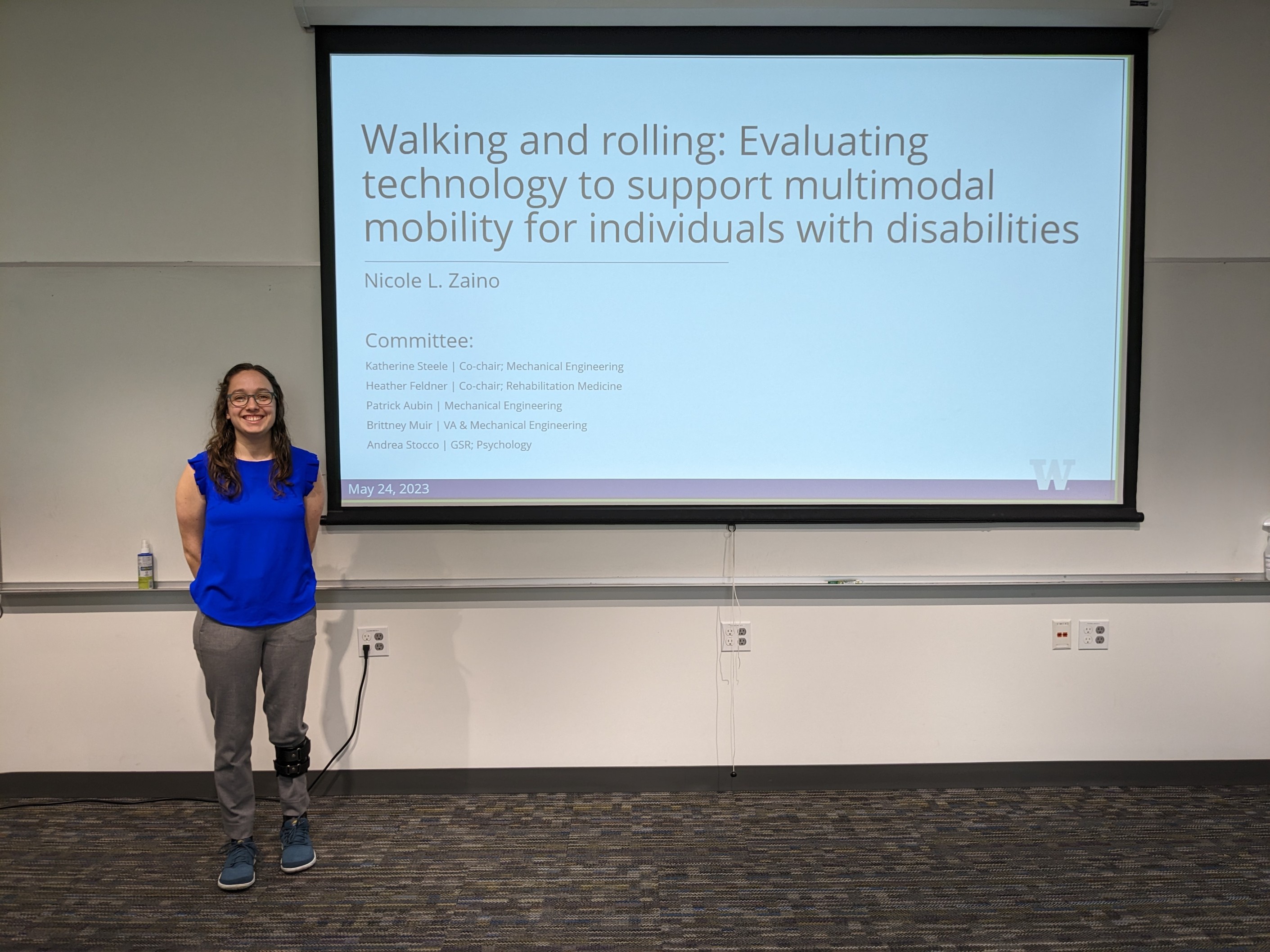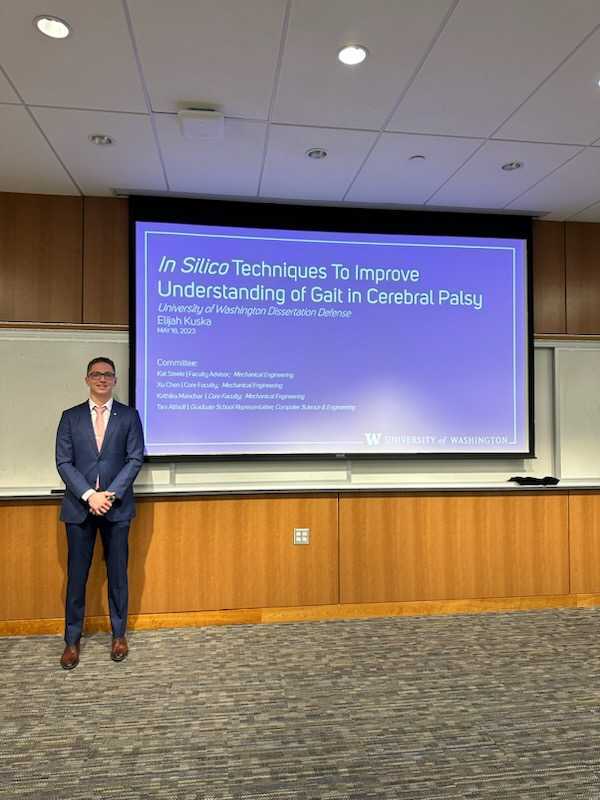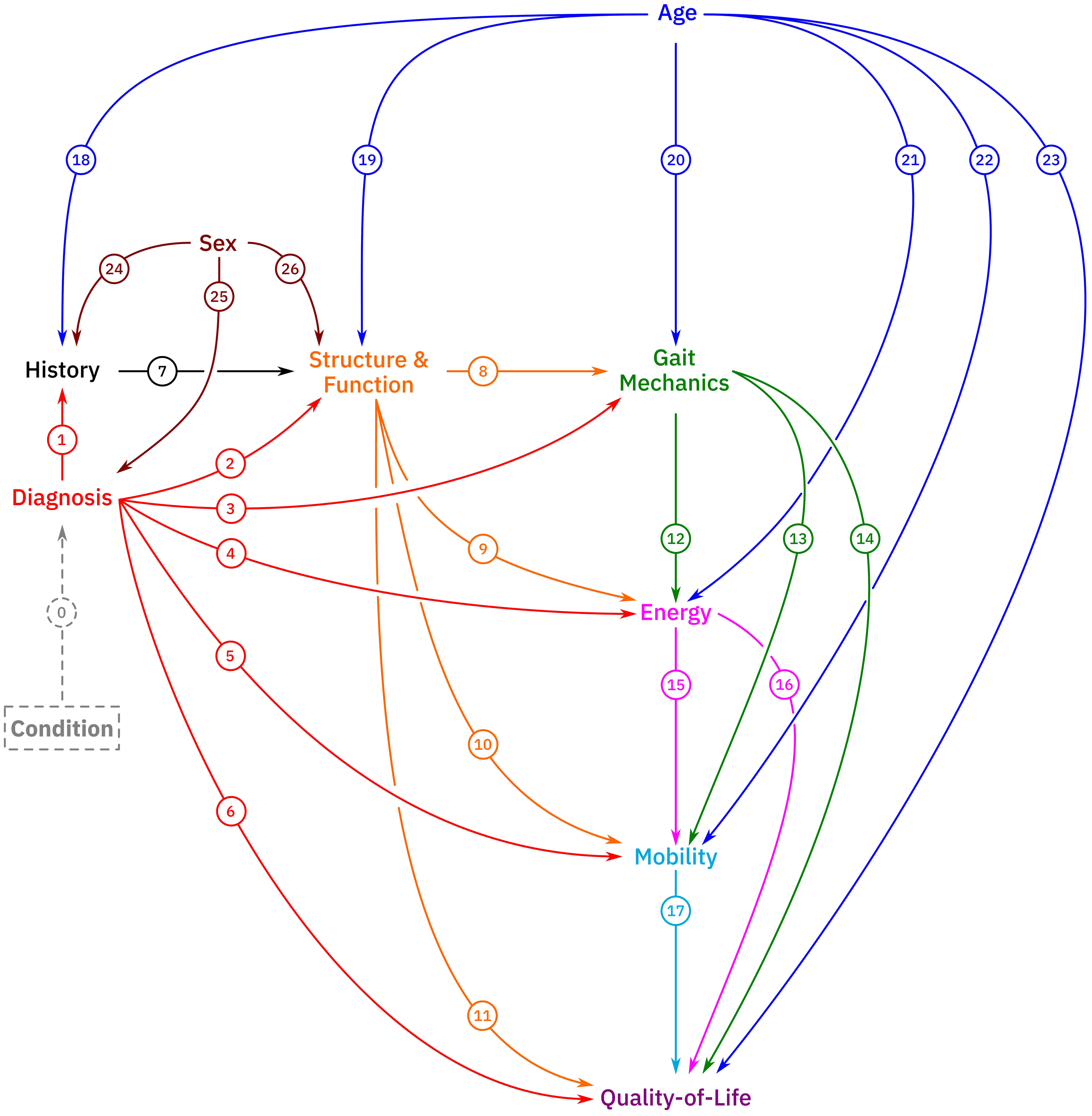Journal Article in Journal of Biomechanics:
Physiological and biomechanical responses to mechanical assistance from wearable technology are highly variable, especially for clinical populations; tools to predict how users respond to different types of exoskeleton assistance may optimize the prescription process and uncover underlying mechanisms driving locomotor changes in the context of personalized wearable/assistive technology.
Aim: The purpose of this study was to determine if a discrepancy modeling framework could quantify individual-specific gait responses to ankle exoskeletons.
Method: We employ a machine learning technique — neural network based discrepancy modeling — on gait data from 12 non-disabled adults to capture within-participant differences in walking dynamics without vs. with a bilateral passive elastic ankle exoskeletons applying 5 N-m/deg of torque. We fit three models: Nominal gait (no exo), Exo, and Discrepancy. Then, post-fitting, we extend the Nominal by the Discrepancy Model (Augmented). We hypothesize that if Augmented (Nom+Discrep) can capture similar amount of variability as the Exo model, then it can be inferred that the discrepancy model accurately captures how a user will respond to an exoskeleton — without direct information about that user’s physiology or motor coordination.
Results:While joint kinematics during Exo gait were well predicted using the Nominal model (median 𝑅2 = 0.863 − 0.939), the Augmented model significantly increased variance accounted for (𝑝 < 0.042, median 𝑅2 = 0.928 − 0.963). For EMG, the Augmented model (median 𝑅2 = 0.665 −
0.788) accounted for significantly more variance than the Nominal model (median 𝑅2 = 0.516 − 0.664). Minimal kinematic variance was left unexplained by the Exo model (median 𝑅2 = 0.954 − 0.978), but only accounted for 72.4%–81.5% of the median variance in EMG during Exo gait across all individuals.
Interpretation:Discrepancy modeling successfully quantified individuals’ exoskeleton responses without requiring knowledge about physiological structure or motor control. However, additional measurement modalities and/or improved resolution are needed to characterize Exo gait, as the discrepancy may not comprehensively capture response due to unexplained variance in Exo gait.




 Congratulations to Dr. Elijah Kuska on earning his Doctorate in Mechanical Engineering! Dr. Kuska’s PhD thesis dissertation was titled In Silico Techniques to Improve Understanding of Gait in Cerebral Palsy. Congratulations and best of luck as you move forward as an assistant teaching professor at the Colorado School of Mines!
Congratulations to Dr. Elijah Kuska on earning his Doctorate in Mechanical Engineering! Dr. Kuska’s PhD thesis dissertation was titled In Silico Techniques to Improve Understanding of Gait in Cerebral Palsy. Congratulations and best of luck as you move forward as an assistant teaching professor at the Colorado School of Mines!